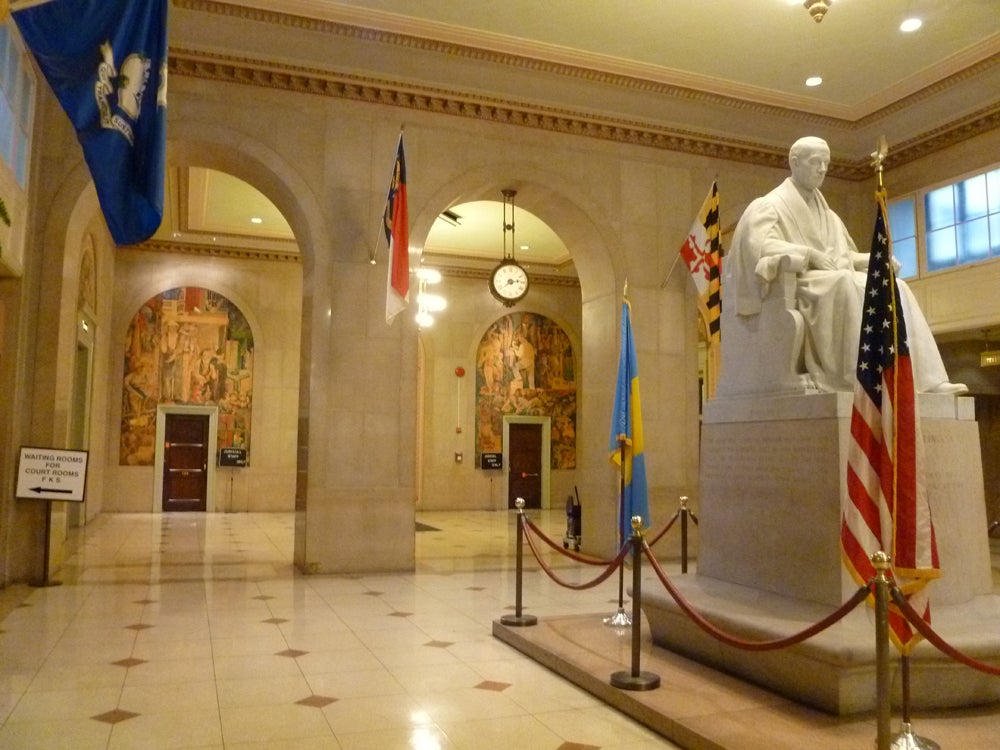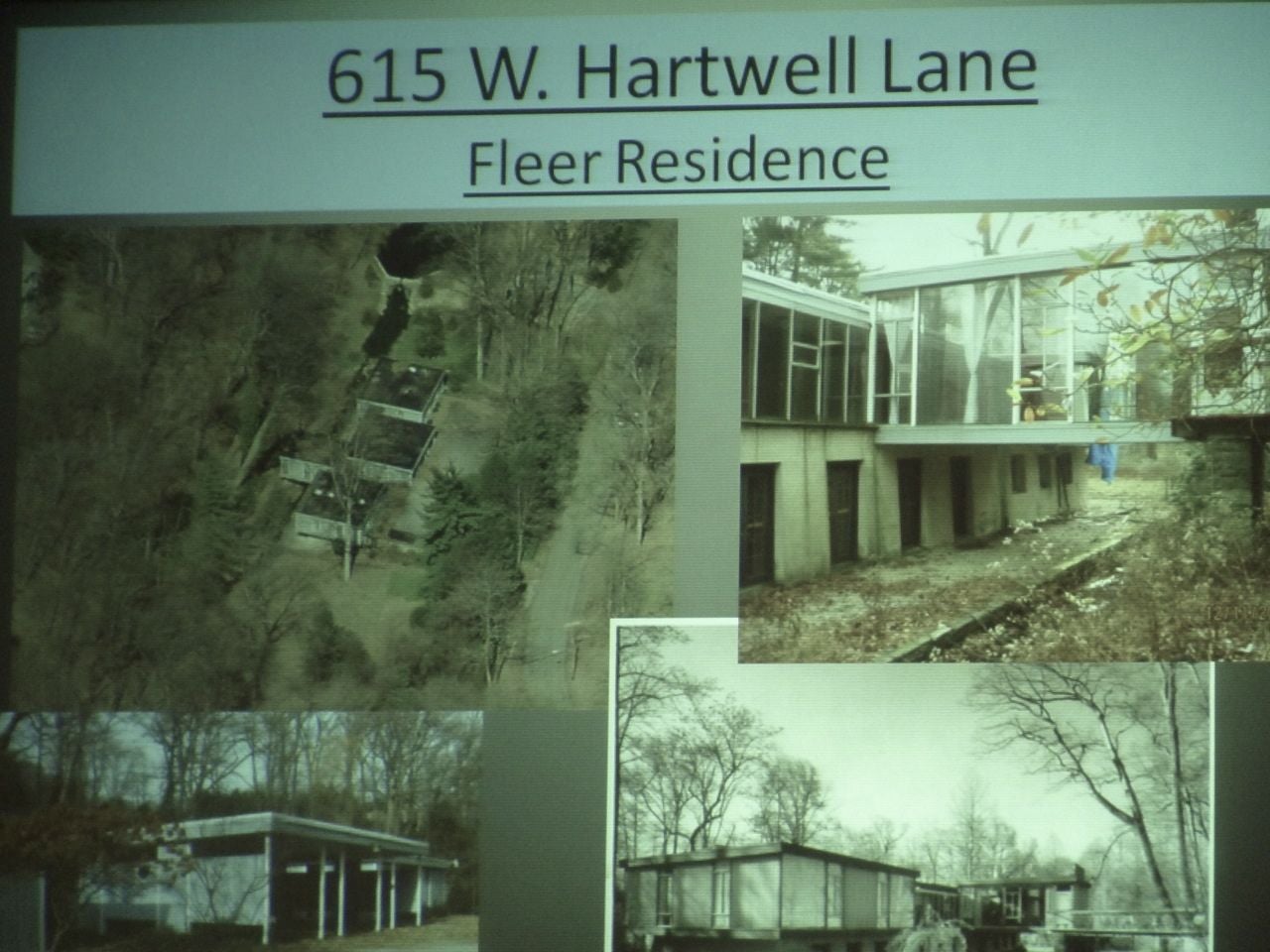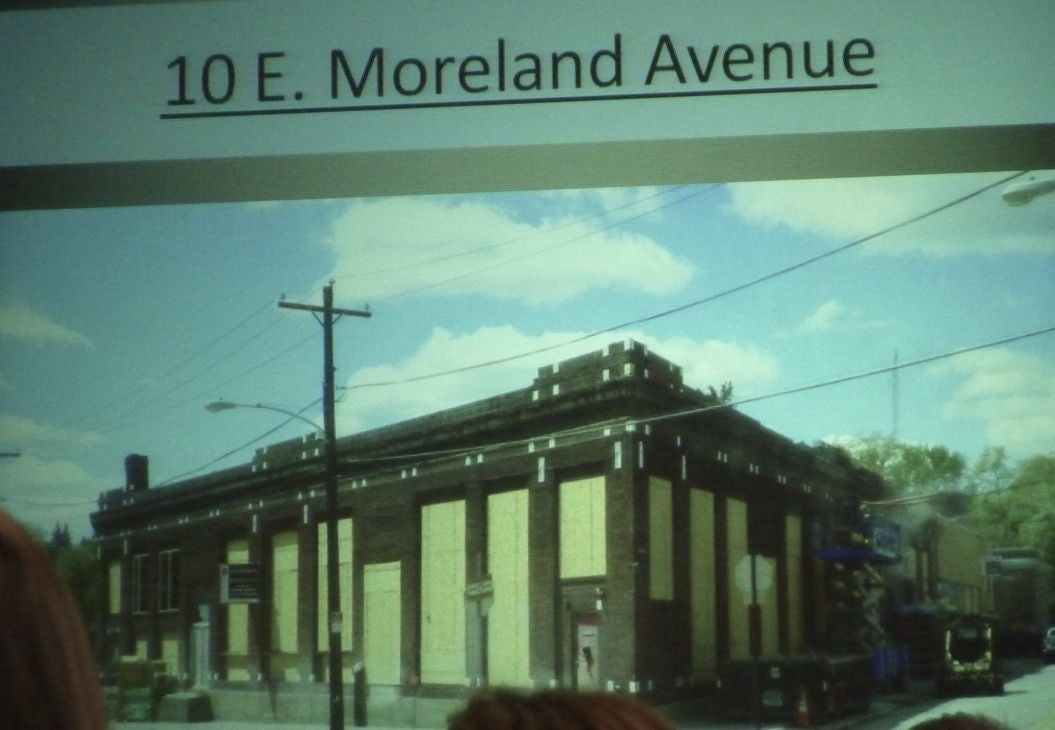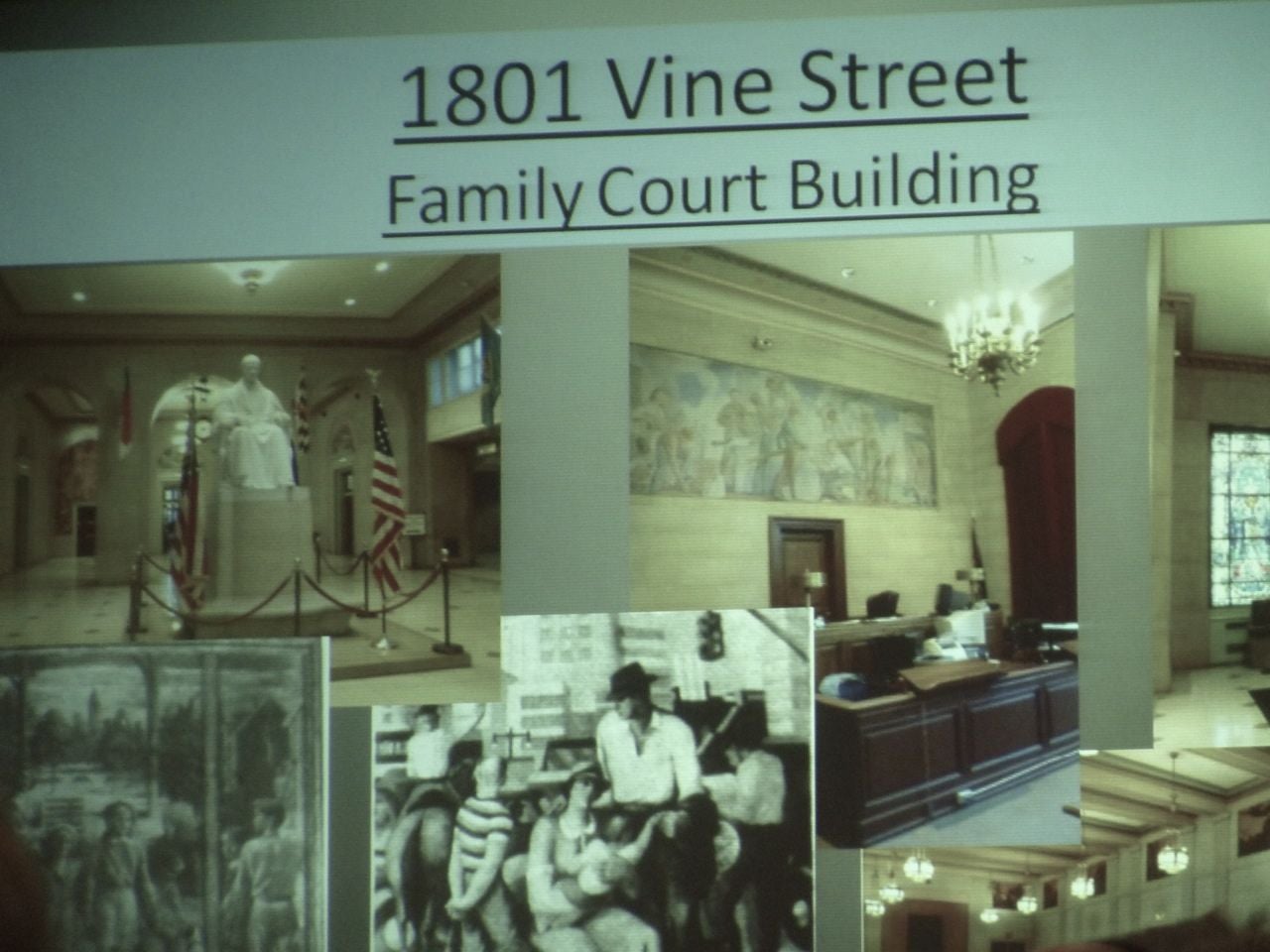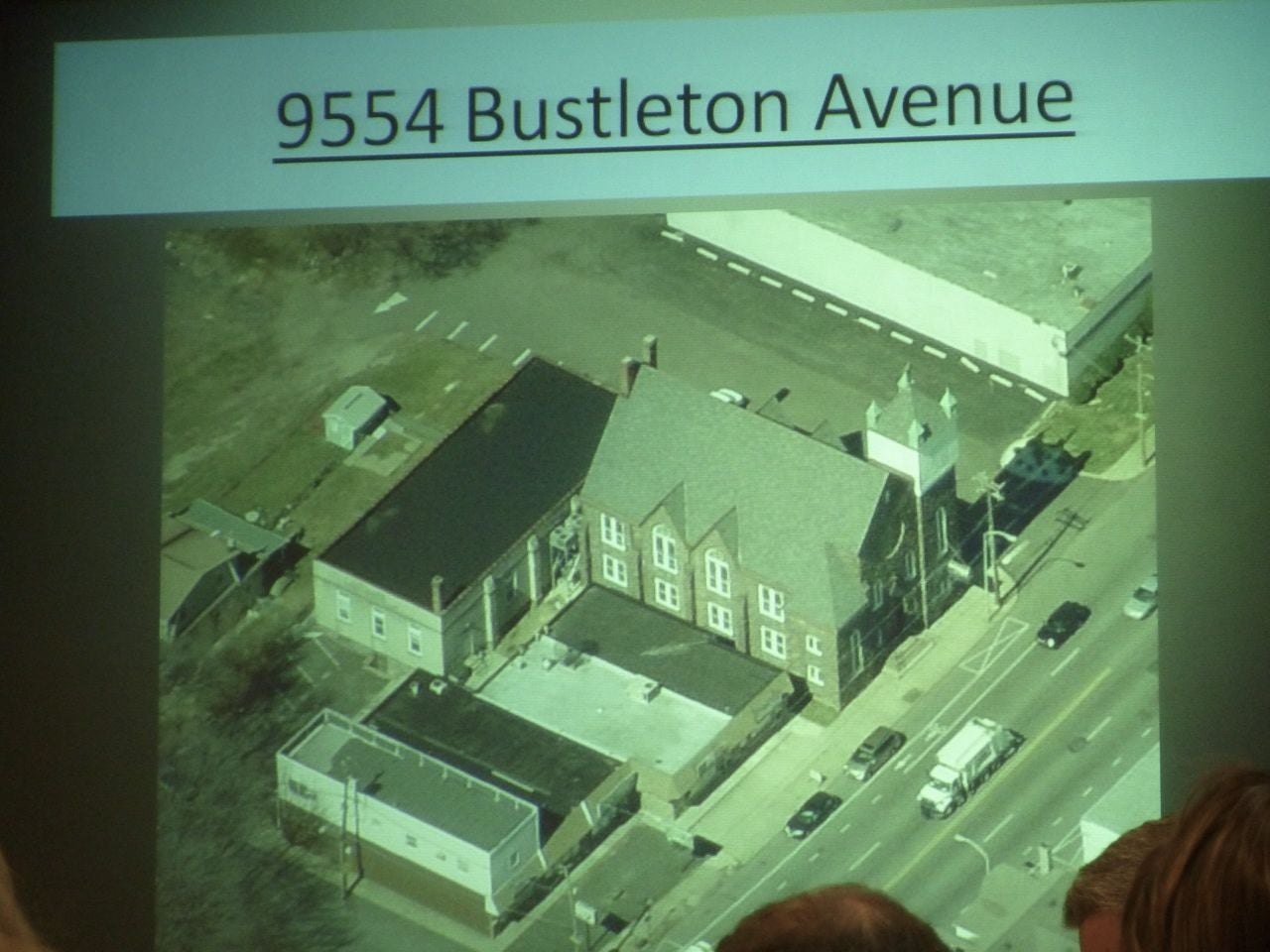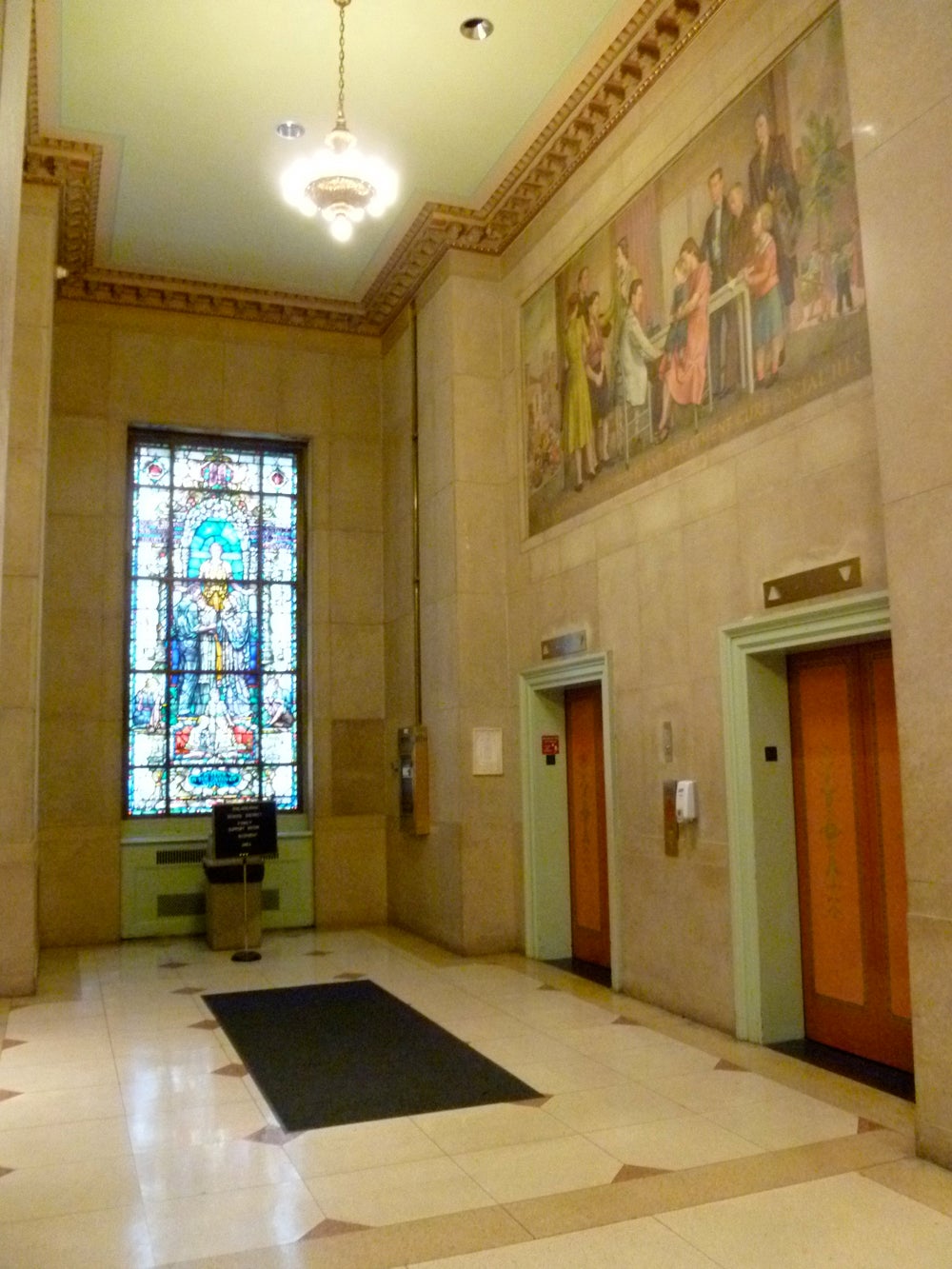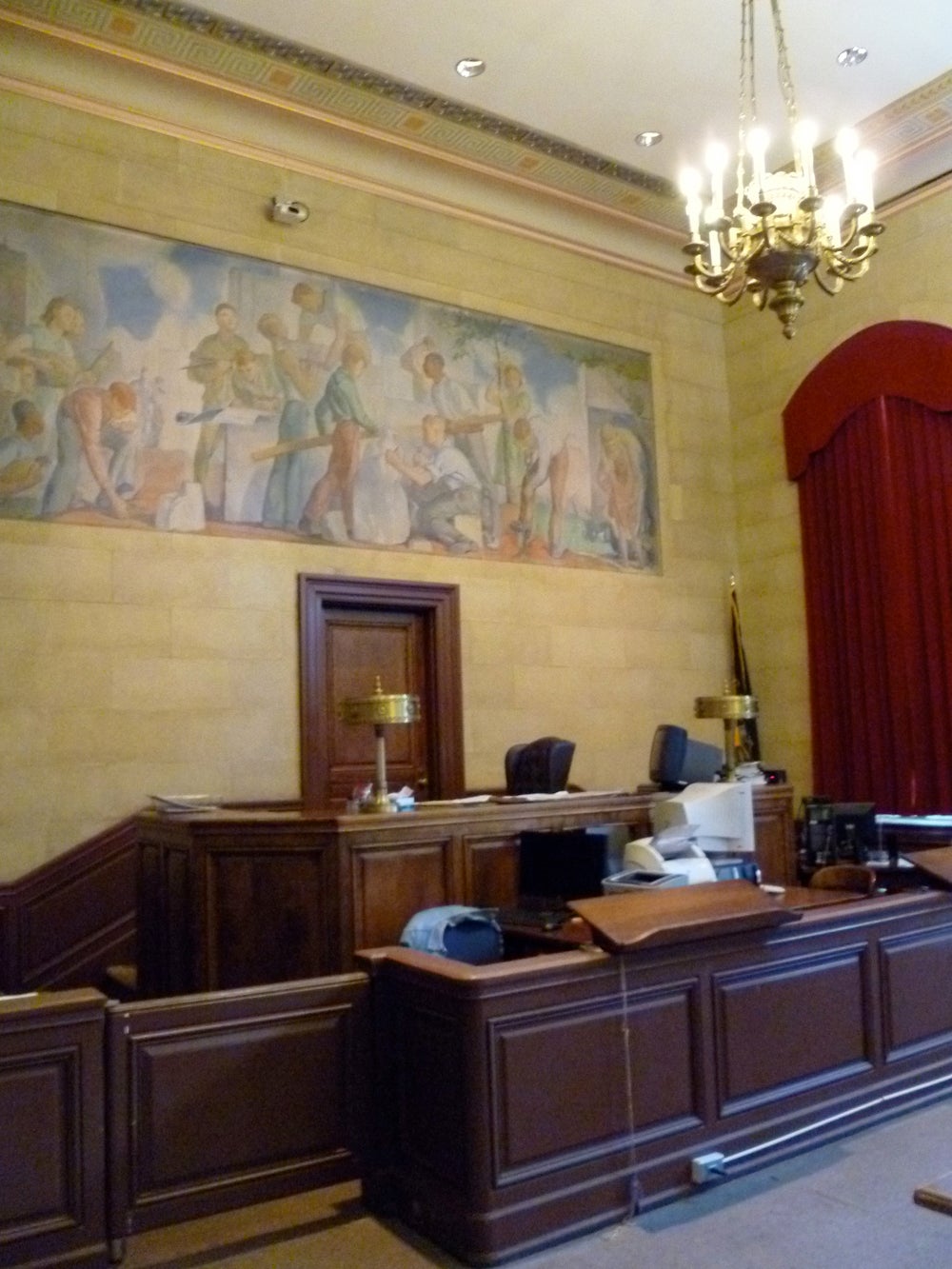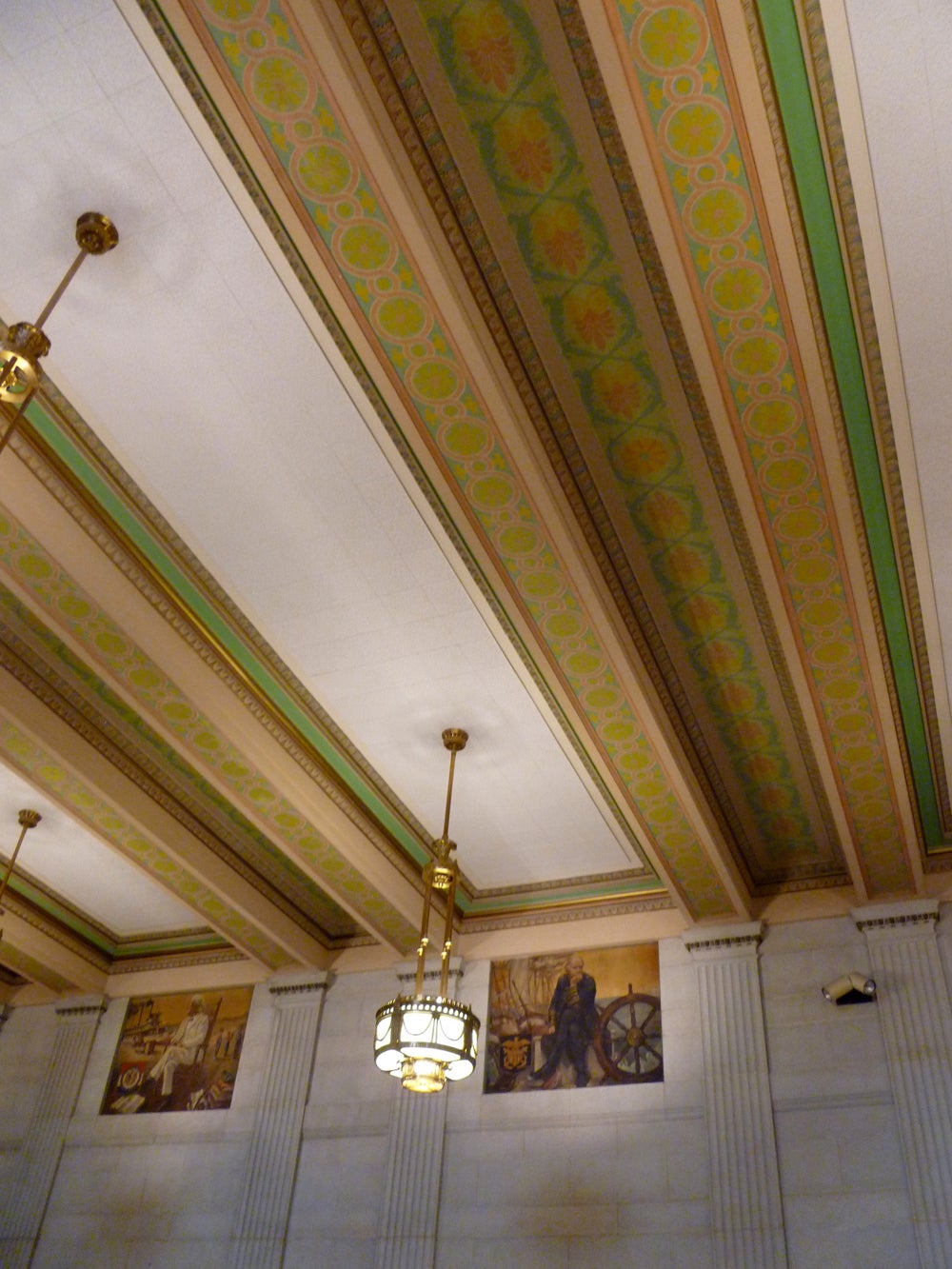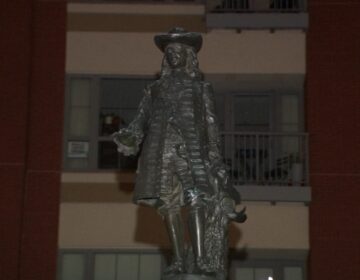Historical Commission designates Family Court interiors
With little fanfare and much enthusiasm, the Historical Commission approved historic designation for most of the interior of John Windrim’s 1938 Family Court Building, at 1801 Vine Street. It also designated three PSFS branches, as well as another former bank branch near South Street, rescinded two designations, and addressed several cases that raised questions about the processes and motives involved in historic designation.
The morning’s most in-depth discussion was reserved for a 1920s industrial building in Chestnut Hill, the former home of Glen Willow Ice Manufacturing Company. The property was nominated for designation by Ann Spaeth of the Chestnut Hill Residents Association, after it was acquired by a medical facilities developer for conversion into a dialysis facility.
Spaeth spoke tremulously about the building’s importance to the area, but both Commission staff members and the developer’s attorney suggested that the nomination had initially been brought forth in December as protective move to stop the project. “This kind of use of historical power is mischievous, at best,” the lawyer, Carl Primavera, cautioned.
Commission executive director Jonathan Farnham then reminded Commission members that any work that began before the staff sent out notice that the structure had been nominated for historic consideration is completely legal. In his brief, he recommended denying historic designation and noted that, contrary to the nomination, the building was neither architecturally, culturally, or historically significant and was not a recognizable feature in the neighborhood. He also said the nomination as put forth contained errors and would need to be revised.
In preparing to motion for refusing historic designation to the property, Sara Merriman, designee for the director of the department of commerce (Alan Greenberger) said, “I approve of nominations from community members . . . but there’s a threshold for individual designation that this nomination does not meet.” The ensuing discussion, she added later, “begs the question of whether [the property] is worthy of historic designation — and in my opinion, it is not.” Following the recommendations of the staff, the Commission denied the application.
A residential case presented a dilemma that, according to Farnham, the Commission may never have dealt with before. It concerned a property that has been nominated for designation but had been sold prior to the case arriving before the Commission’s Historic Designation committee. Commission members took pains to explain to the new owner the responsibilities that come with such designation, adding that any work governed would only apply to exterior renovations, and that certain tax benefits do come with ownership. The case was tabled, however, to allow him to more carefully consider the implications.
The Family Court interior was the last historic designation case. It included 35 of 37 murals, with the two remaining ones receiving a separate designation — as significant “objects”— because they are located in private offices not covered under the general interiors designation. The nominations were put forth by Preservation Alliance.
In designating the PSFS bank branches — one in the Lehigh area, one in West Philadelphia, and one in South Philadelphia, each built in the 1920s — as historic, the Commission cited the mastery of George Howe (who would later partner with William Lescaze to design the bank’s groundbreaking headquarters downtown) and the graceful ironwork of Samuel Yellin. The Commission also added the former Rosenbaum Bank on South 3rd Street, a Beaux Art structure from 1907, to the Philadelphia Register of Historic Places. It was designed by Louis Magaziner and William Woodburn Potter.
After rescinding two designations (one on North Broad and one in Northern Liberties) because the properties they protect no longer stand, the Commission turned to a third recommendation for rescision, 9554 Bustleton in the Northeast. While the 1881 Pennepack Baptist Church does indeed still stand, it turns out it may have been mistakenly designated as historic.
According to Farnham, his staff noticed the discrepancy while reviewing a proposal to construct an addition onto a newer portion of the building. He presented a document that suggested that 1986 language designating the property as historic cited it as having been originally built in 1707, enlarged in 1770, and rebuilt in 1805 — but all of those dates referred to the congregation’s already-designated original building at 8800 Krewston Rd.
The confusion stemmed from the fact that Bustleton remained as the mailing address of the church, he explained. (To add to the confusion, the church has since moved back to its original Krewston location.) Acting on the staff’s assessment of the 1881 building as not worthy of historic designation, the Commission rescinded its status.
The tangled tale prompted Farnham to remind the Commission that the staff is embarking on a project with Partners for Sacred Spaces to create an inventory of unprotected, historically significant places of worship.
In other business, the Commission considered applications for work on six already-designated historic properties. It followed the recommendations of the Architectural Committee, including denial of a renovation of a severely-modified 1855 residence in the Ritt-Fit historic district, approval of a re-configured sign on the Cuba Libre restaurant in the Old City historic district, and approval of the demolition and reconstruction of a side wall of a residence in the Spring Garden district.
Contact the reporter at jgreco@planphilly.com
WHYY is your source for fact-based, in-depth journalism and information. As a nonprofit organization, we rely on financial support from readers like you. Please give today.



